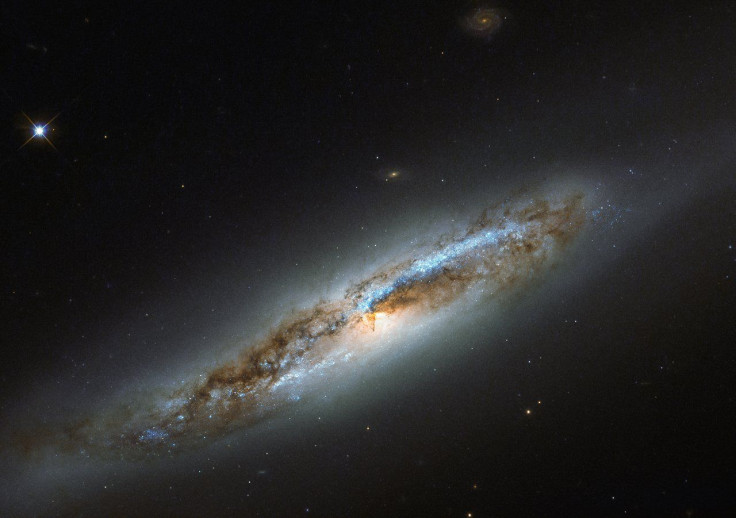Hubble Photographs NGC 4388 — A Distant Galaxy Feeling The Pull Of Its Neighbors

In a galactic commune far, far away, a galaxy is facing an identity crisis.
Astronomers using the Hubble Space Telescope have captured an image of the NGC 4388 — a galaxy located roughly 60 million light-years from Earth in the Virgo Cluster — exhibiting traits seen both in spiral as well as elliptical galaxies.
"While the galaxy’s outskirts appear smooth and featureless, a classic feature of an elliptical galaxy, its center displays remarkable dust lanes constrained within two symmetric spiral arms, which emerge from the galaxy’s glowing core — one of the obvious features of a spiral galaxy," the European Space Agency (ESA) said in a statement released Friday. "Within the arms, speckles of bright blue mark the locations of young stars, indicating that NGC 4388 has hosted recent bursts of star formation."
Scientists believe that NGC 4388's unusual combination of features was caused due to gravitational interactions with other galaxies in the Virgo Cluster, which is estimated to contain over 1,300 members.
"Gravitational interactions — from glancing blows to head-on collisions, tidal influencing, mergers, and galactic cannibalism — can be devastating to galaxies," the ESA said. "While some may be lucky enough to simply suffer a distorted spiral arm or newly-triggered wave of star formation, others see their structure and contents completely and irrevocably altered."
Another instance of the gravitational interactions between massive galaxies can be seen in an image of the irregular galaxy IC 3583 released earlier this month. The image — also captured by Hubble — shows the Type II irregular galaxy being distorted due to the gravitational tug exerted by Messier 90 — an intermediate spiral galaxy located roughly 60 million light-years away.

The Hubble Space Telescope was launched aboard NASA’s space shuttle Discovery on April 24, 1990. Since then, it has not only captured an unimaginable number of truly spectacular nebulae and galaxies, it has also peered back over 13 billion years to look at our cosmos in its infancy, giving us, as NASA aptly put in an earlier statement, “a front row seat to the awe inspiring universe we live in.”
© Copyright IBTimes 2024. All rights reserved.





















